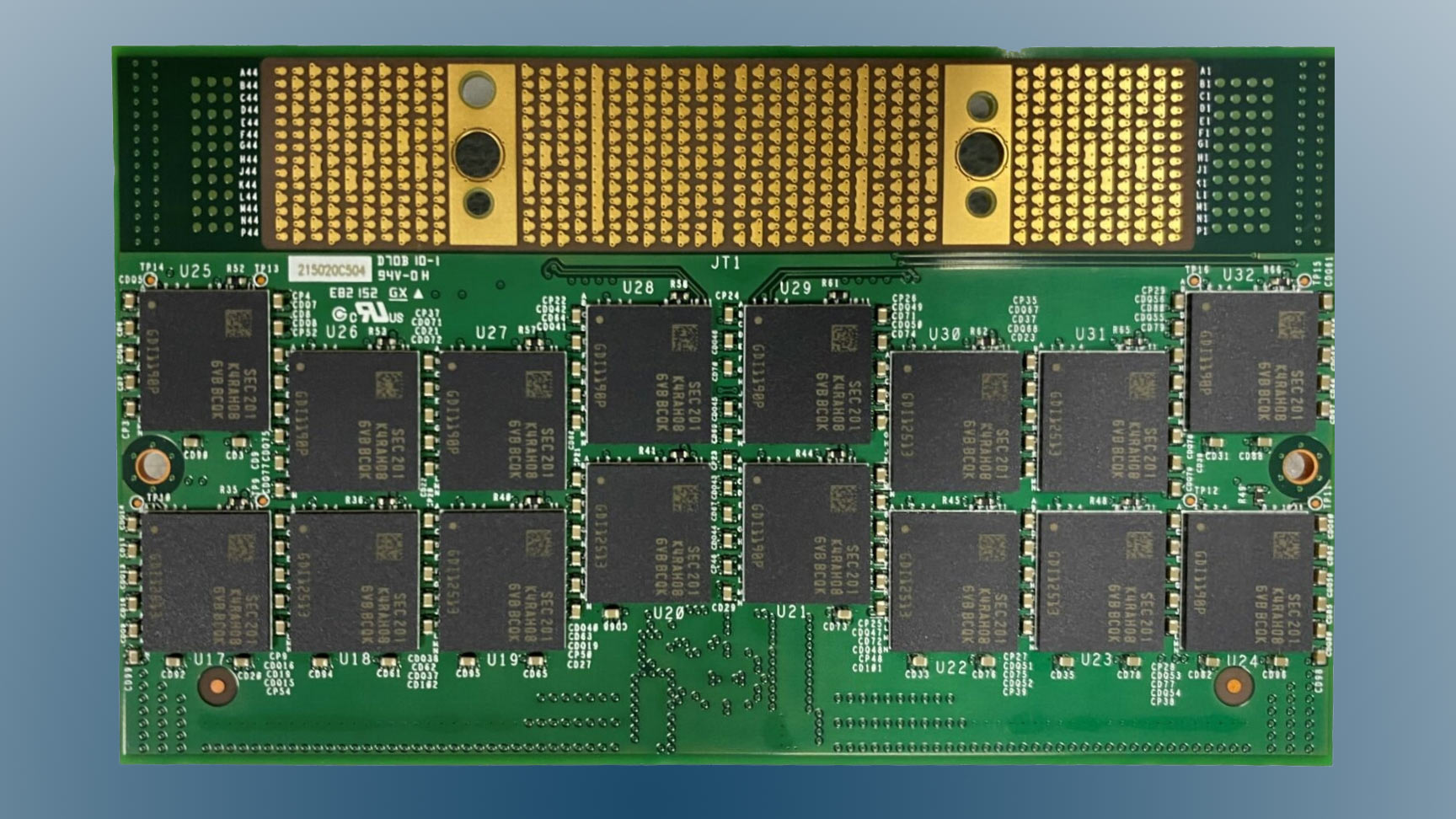New space-saving RAM sticks that jam up to 128GB of memory in a laptop get industry's stamp of approval - CAMM2 standard ratified by JEDEC
SO-DIMM's successor is official.

CAMM, the brand-new form factor for laptop RAM, has officially become a JEDEC standard. Now officially called CAMM2, its adoption by JEDEC means it will almost certainly see increased use in upcoming laptop generations, replacing the older SO-DIMM form factor that had been used for over two decades.
CAMM started as a proprietary technology introduced by Dell with its Precision 7670 laptop. The main benefit of CAMM over SO-DIMM is its thin profile, which Dell says is 57% thinner than SO-DIMM. Dell also claimed that it could get past for 6,400MHz barrier for DDR5 SO-DIMM memory and "scale to ever higher clock speeds."
However, CAMM's proprietary nature made it far worse than SO-DIMM concerning upgrading, since Dell was the only one making CAMM memory. Meanwhile, SO-DIMM RAM can be sourced from countless companies. CAMM2 resolves that issue by being standardized by JEDEC, the organization that sets the specifications for memory like GDDR6, HBM3, and DDR5.
The CAMM2 specifications include two variants: one for DDR5 and one for LPDDR5(X). Notably, CAMM2 will make non-soldered LPDDR5(X) memory possible, and could also discourage the use of soldered DDR5 RAM. However, the two variants have different pin-outs, so it's not possible to use one variant on a motherboard that's made for the other type of RAM.
Another benefit of CAMM2 is that it means multiple memory modules aren't necessary to activate dual-channel memory. A single CAMM2 module can be made to have two memory channels, giving more memory bandwidth to the CPU and integrated graphics for greater performance. SO-DIMM memory can only ever have one channel per stick. However, there are single memory channel CAMM2 modules planned, according to the source.
Although CAMM2 will certainly start off being much more expensive than SO-DIMM since it's so new, it looks set to become the new standard for laptops and other mobile devices. It will likely take some time for SO-DIMM to be phased out, and we can expect the lifetimes of the two standards to overlap significantly.
Get Tom's Hardware's best news and in-depth reviews, straight to your inbox.

Matthew Connatser is a freelancing writer for Tom's Hardware US. He writes articles about CPUs, GPUs, SSDs, and computers in general.
-
King_V ReplyHowever, there are single memory channel CAMM2 modules planned, according to the source.
Why?? -
-Fran- Holy cow! Dell actually did the right thing. I am greatly surprised.Reply
Kudos to the Dell engineers that managed to convince the execs to make this happen.
Regards. -
usertests Reply
Some CPUs don't support more than single-channel, like Alder Lake-N and Mendocino.King_V said:Why?? -
bit_user Replyincredibly tiny RAM sticks
What's this about them being tiny?? The chips are the same ones as you'd have on SODIMMs, so I don't foresee them being much smaller than a pair of them, next to each other.
'cuz OEMs like money. Seems obvious that they'd make a half-populated one, at the low-end.King_V said:Why??
@usertests is spot-on about Alder Lake-N only supporting only single-channel. Even the 8-core N305, with the same 32EU iGPU as the desktop Alder Lake! Awful, isn't it? -
usertests Reply
This does not eliminate 100% of soldered scenarios. It's still larger and less thin, it's probably not going into many tablets, as nice as it might be. And just look at Meteor Lake packages with memory on them. At best CAMM halts the complete collapse of user-upgradeable memory (in mobile) that would have happened if nothing was available to replace SODIMM for DDR6.milkylainen said:Maybe now we can stop hearing Apple excuses for soldering? -
bit_user Okay, so if it's this form factor, then I'll agree it's tiny.Reply
Source: https://www.tomshardware.com/news/samsung-unveils-lpcamm-up-to-128gb-of-ddr5-in-60-less-space
However, that's not the form factor that was pictured. The one pictured is Dell's, which I think isn't much smaller than a pair of SODIMMs, sitting next to each other. -
bit_user Reply
Fixed that, for you.usertests said:At best CAMM halts the complete collapse of user-upgradeable memory (in mobile) that would have happened if nothing was available to replace SODIMM for DDR6 LPDDR5X. -
usertests Reply
No. DDR5 is considered the last generation for which SODIMM would have been possible. With DDR6, which is coming, CAMM is needed. So without CAMM or a similar standard, we would have seen 100% soldered LPDDR6/7/X/whatever memory in the mobile market.bit_user said:Fixed that, for you.
https://www.tomshardware.com/news/camm-to-usurp-so-dimm-laptop-memory-form-factor-says-jedec-memberhttps://www.pcworld.com/article/1473126/camm-the-future-of-laptop-memory-has-arrived.html